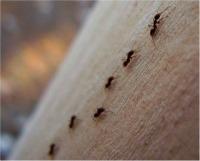Resources about Pesticides and Integrated Pest Management in Child Care Settings for Government Agencies

Exposure to pests such as cockroaches, rodents, ants, and stinging insects in childcare centers may place children at risk for disease, asthma attacks, bites, and stings. Improper use of pesticides can also place children at risk. A recent study of pesticide use in child care centers revealed that 75% of centers reported at least one pesticide application in the last year.
Several factors increase both children's exposures and their vulnerability to these exposures compared to adults. Children spend more time on the floor, where residues can transfer to skin and be absorbed. Young children also frequently place their hands and objects in their mouths, resulting in non-dietary ingestion of pesticides.
Children are less developed immunologically, physiologically, and neurologically, and therefore may be more susceptible to the adverse effects of chemicals and toxins. There is increasing evidence of adverse effects of pesticides on young children, particularly on neurodevelopment. The following links provide information about the health effects associated with exposure to pests and pesticides and the steps that can be taken to use integrated pest management strategies in childcare facilities.
Resources
- Children's Total Exposure to Persistent Pesticides and Other Persistent Organic Pollutants (CTEPP)
- Pesticides in Child Care Initiative: 2010 Staten Island Pilot Project Report
- University of California, Berkeley - Center for Children's Environmental Health Research - Pest Management and Pesticide Use in California Child Care Centers(43 pp, 6.2 MB, About PDF) Exit
